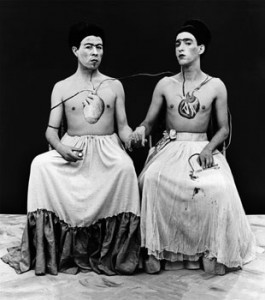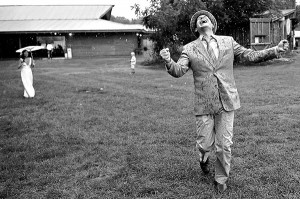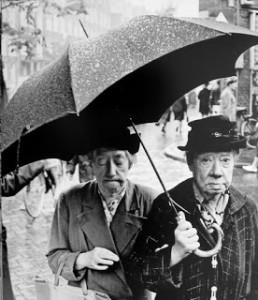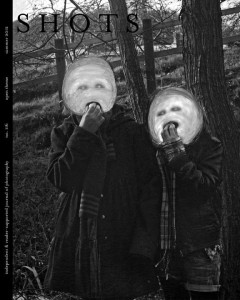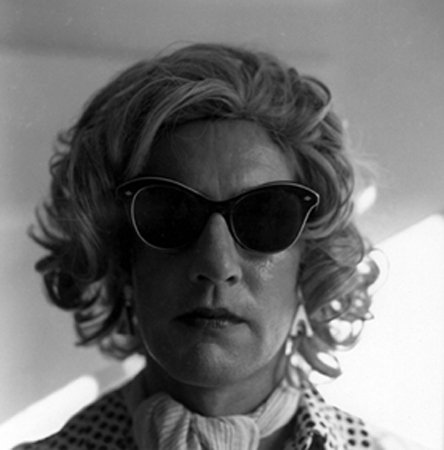
(An introduction to The Woman from Malibu)
(speaker has hands covering face, slowly drops them in last couple of sentences)
You know I hope you don’t think this is creepy but before you came in here today I couldn’t help noticing you out in the hallway, when I saw you I started looking at you, just a little bit, and I know things haven’t been easy lately, things haven’t exactly been running so smoothly or according to plan, and sometimes I can see that, you know, in the way that you hold yourself, in the way you hold your face out in front of you, but like I said I saw you just before you came in here today and maybe you were a bit distracted or you’d finally got that bit of news that you’d been waiting for, but you looked completely relaxed. It was as if you had given in somehow, that the usual tension of display and how do I look had just stopped, and I, I hope you don’t think is too personal a thing to say, especially, you know, in a circumstance like this, but you looked so beautiful, I mean, you really looked like yourself, and it’s strange, isn’t it, that at the very moment you seem to forget yourself, you start looking like yourself. At the very moment you seem to forget yourself, you start looking like yourself.
I’d like to show you a movie though I think you’re not going to be able to see it.
I’d like to tell you a story, but I think you won’t be able to hear it.
Because sometimes – don’t you find? – that the words someone is saying – they can take such a long time to reach you. So even though it looks like I’m just a few metres away from you right now I’d like to assure you that I’m not. There’s a huge distance between this, this here, and that. I’ll explain a little more about this in a moment.
I want to show you a picture of a woman who is a man. You could think of him as Lady Gaga in slow motion, and this lady is here, yes, she’s kept here in this room, because she’s a teacher, yes she’s a teacher in this university, and she has something very special to tell you today. She’s such an important teacher for you, exactly and only for you, but there’s something about her method that you might unusual, or hard to read, so I wanted to give you this tip, this insider clue, this edge.
She’s going to be talking, and like most of the talk you hear in this room, the words are not important. The words are not important. I think you all know what I mean by that, don’t you?
Because most of the words that you hear in this room are coming from you. They’re coming from you right now, offering you endless descriptions of your life, and your friends, and everything that happened today. It’s your voice, isn’t it? The voice you can’t seem to turn off, that never stops talking, even when you’re asleep. The voice that’s talking right now. Wait a minute, stop. Can you hear it? Calling to you like those fabled sirens. Listen to me. Listen to ME. What is this voice doing, what is it always saying? Listen to me. Isn’t this the voice that is busily converting everything that happens in the world into MY experience? MY traffic light, MY line-up at the grocery store, MY assignment, and MY exam score?
It can be hard to hear sometimes, it can be hard to be here. Here in this room. Sometimes, when the voice is so loud, I’m in pain, I’m in pain, I’m in pain, I’m in pain, sometimes other people appear before you like speechless monsters, their mouths are moving but you can’t hear a word they’re saying because you’re so busy listening, I’m in pain, I’m in pain, I’m in pain. Why can’t you help me? They’re so far away, the other ones, the ones that are trying to talk to you, filled with empty gestures, while the voice is always so reassuringly close. As if it was you. As if all this, all of us, had been created just for you.
Tell me, am I talking to you right now? Or am I talking to the description your voice is offering you, is telling you, about me? Do you think you can see the chairs of this room, the chair you’re sitting on, or do you think you’re only hearing the description of the chair, the word ‘chair,’ the memories of other chairs, the chairs that you sat on, that belong to you?
I don’t come to this room often, but whenever I do I wonder how I can see the colour of the carpet, the smell of that perfect stranger in the 7th row. How can I hear a word anyone is saying when I’m so busy talking about the world that I’m not quite living in, always busy describing myself to myself. Because if I stopped, even for a few minutes, I’d just disappear, wouldn’t I? Wouldn’t I just go out like a light?
I want to show you this movie, or just a fragment of this movie, featuring this prehistoric slow motion Lady Gaga teacher. And even though she’s talking, that’s not the way she teaches. The words are like markers on the side of the road, like the lines in a colouring book. Your voice doesn’t believe me I can tell – but the words of this teacher aren’t important, think of them please as a kind of music. The kind of music you might make if you couldn’t sing. And because she’s performing at a time before the personal computer was invented… Whoa, what do you mean invented? Didn’t Darwin see the lizards using computers on the Galapogos Islands? Nevermind. Because the person you’re going to meet has never actually touched or even laid eyes on a computer before, they’re going to seem really slow, like they’re living under water – and this slow motion, this pre-computer handicap is the secret of the genius of this teacher – because it’s allowed her to listen not to the words, she’s tired of the words, aren’t you tired of yours? – but she listens so hard, she slows things down so that you can hear them too – until we can all hear that she is making music out of silences, out of the spaces between her words. But more than this, oh yes, we haven’t come this far only to listen to a concert, to attend some slow motion virtuoso recital. No. Lady Slomo is going to teach you to listen to your silences. If you’re like me – aren’t you like me? – you’ve spent your whole life glued to the endless ticker of words that keeps running across every moment of the day. But she’s here today, and you’ve come to this room today, to learn how to play the tune. To learn how to play your tune. To learn how to recognize your tune, to loosen your grip on the words you use to describe the world, and listen to the silences between those words. Because if you can listen to those spaces, if you can live inside those spaces, if you can follow her to the place of your own music, then you’ll be free, maybe just for a moment, for a fraction of a second, for the time it takes for the breath to draw into the body, and out again, maybe for that long, you’ll be completely and absolutely free for the first time in your life.
Could we play the recording now please?
The Woman From Malibu by Colin Campbell 12 minutes 1976
(Please try and resist the habit momentum of your listening. This is not television, this is not the movies, she is not here to entertain you. For some of you, this is going to feel like the longest 12 minutes of your life. Don’t give in to your voice, don’t give in to her voice. Listen to your silence, please, listen to the music of your own silence, let her speaking be the cue, the invitation to listen to the silence that you already carry inside you, because inside that silence is, or so she would have me believe, the only freedom, the only chance at happiness, that you have.)
